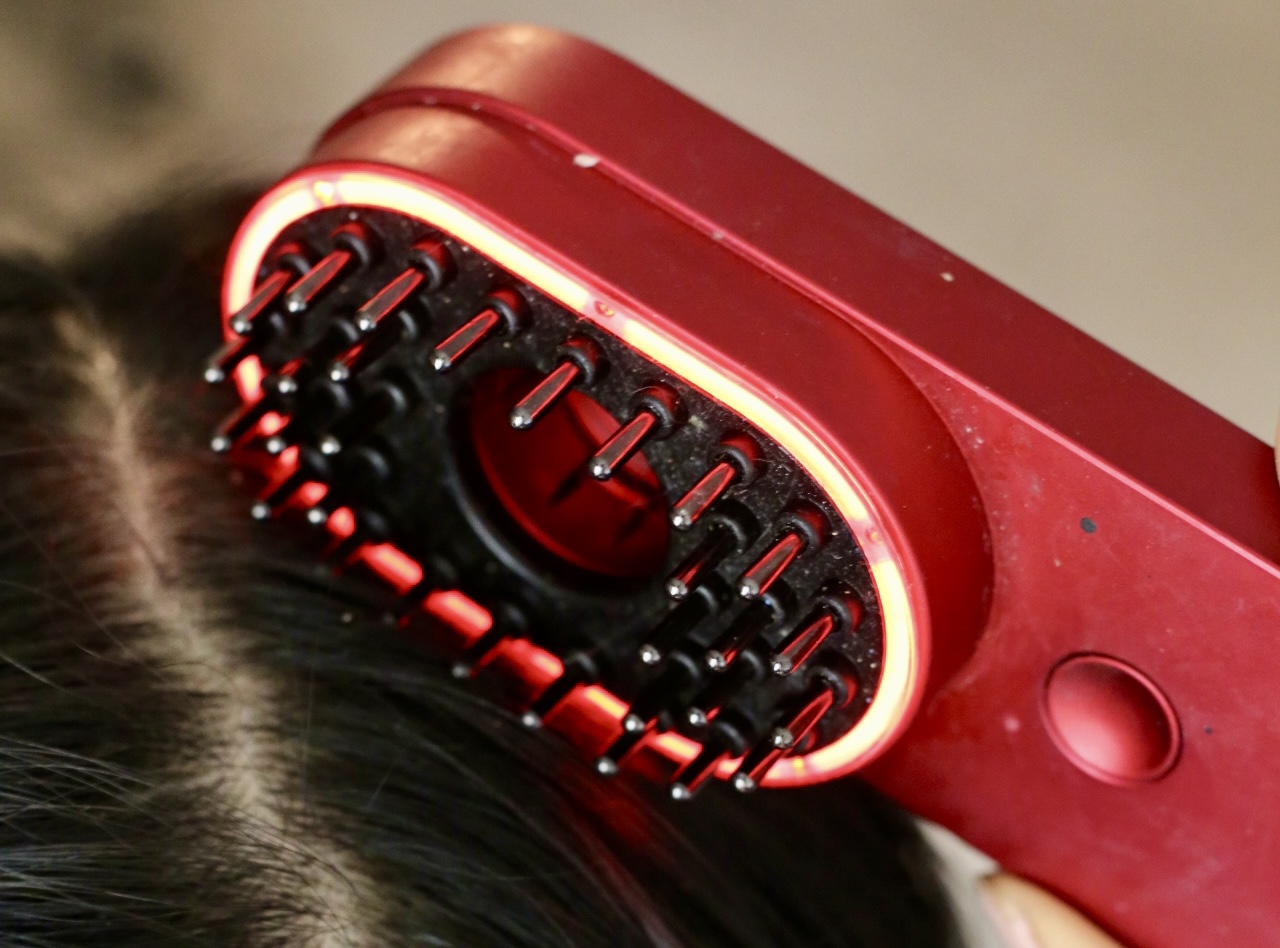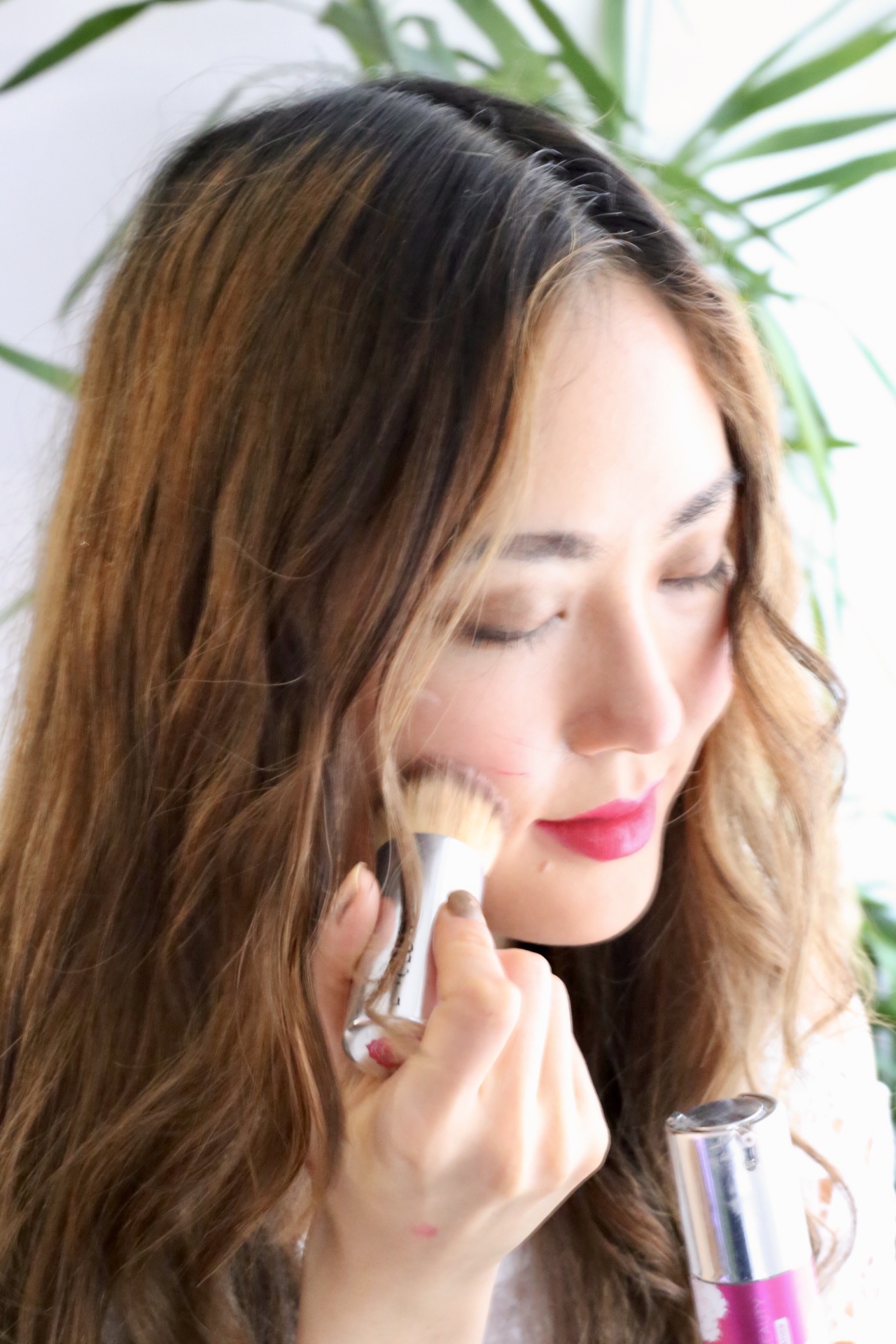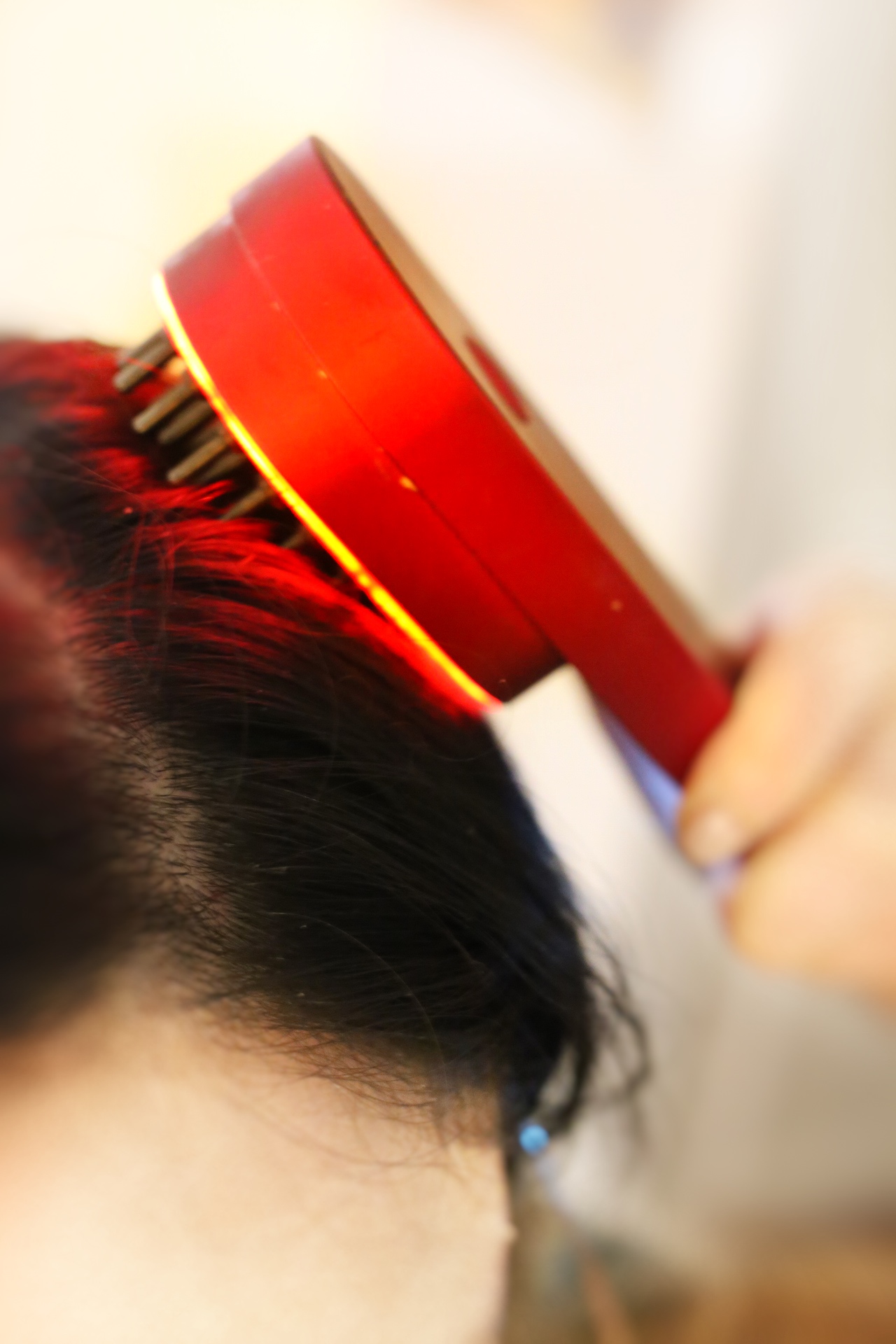Red Light Therapy vs. Other Hair Loss Treatments
Are you tired of staring at your receding hairline or bald patches in the mirror every morning? Have you tried every hair growth treatment available, only to find that nothing seems to work? It’s a problem that affects millions of people worldwide. One solution people are turning to is red light therapy. This revolutionary treatment is gaining popularity as a safe, natural, and effective alternative to traditional hair growth treatments like minoxidil, finasteride, and hair transplant surgery. In this article, we will compare red light therapy with these other options to help you make an informed decision about which treatment is best for you.,

How Does Red Light Therapy Promote Hair Growth?
Red light therapy is a non-invasive hair growth treatment that uses low-level laser therapy (LLLT) to promote hair growth. By applying red light therapy directly to the scalp, the photons of light penetrate the scalp to stimulate and energize cells in the hair follicle. This process, known as photobiomodulation, triggers a series of cellular responses that improve blood flow, increase oxygenation, and reduce inflammation in the scalp. This, in turn, promotes hair growth and helps to reverse the effects of hair loss.
Red light therapy has been shown to be particularly effective in treating androgenetic alopecia – a type of hair loss caused by a combination of genetic and hormonal factors. Unlike traditional hair growth treatments, red light therapy has no known side effects, making it a safer and more natural alternative. It is also painless and non-invasive, making it a more comfortable option for those who are afraid of invasive procedures.

In addition to promoting hair growth, red light therapy has been shown to improve the overall health and quality of hair. By improving blood flow to the scalp, red light therapy increases the delivery of essential nutrients and oxygen to hair follicles, which can help to strengthen and thicken hair. It has also been shown to help reduce the appearance of dandruff and other scalp conditions by reducing inflammation and protecting against bacteria and fungi.
Overall, red light therapy offers a safe, painless, and effective alternative to traditional hair growth treatments. By stimulating and energizing cells in the hair follicle, red light therapy promotes hair growth, improves the overall health and quality of hair, and helps to reverse the effects of hair loss.
Check out: CurrentBody LED Hair Regrowth Device
Minoxidil: How Effective Is It?
Minoxidil is another popular hair growth treatment that has been on the market for decades. It is a topical solution that is applied to the scalp to stimulate hair growth. While it is widely used and has shown some success in regrowing hair, its effectiveness varies from person to person.
Most studies show that minoxidil is most effective for individuals who are in the early stages of hair loss. It works by widening blood vessels in the scalp, which allows more oxygen, blood, and nutrients to reach hair follicles. This increased blood flow can stimulate hair growth and prevent further hair loss.
However, for individuals with advanced hair loss, the results of minoxidil can be less impressive. It may slow down hair loss but may not result in significant regrowth. Furthermore, minoxidil can cause side effects such as scalp irritation, dryness, and itching.
Overall, while minoxidil can be helpful for some individuals, it may not be the best option for everyone. It is important to discuss the potential benefits and risks with a healthcare professional before beginning any hair growth treatment.
Finasteride: Is It Safe for Hair Growth?
Finasteride is another common hair growth treatment that is widely used by people experiencing hair loss. It works by blocking the hormone responsible for hair loss, which in turn promotes hair growth. However, like any medication, it comes with potential risks that need to be considered.
One of the main risks associated with finasteride is a decreased sex drive. This side effect can affect up to 2% of men taking the medication. Additionally, there has been some concern about an increased risk of prostate cancer with finasteride use, although research on this topic has been conflicting.
Despite these potential risks, many people find that finasteride is an effective hair loss treatment. The decision to use this medication should be made in consultation with a healthcare professional, who can help evaluate the potential benefits and risks for each individual.
Hair Transplant Surgery: Is It a Good Option?
For those who have experienced significant hair loss, hair transplant surgery may be a viable option. The people I know of who have had hair transplant surgery in Turkey are happy with their results.
This surgical procedure involves removing hair follicles from one area of the head and transplanting them into the areas where hair has been lost. While this method can provide permanent results, it is important to fully understand the potential risks involved.
As with any surgical procedure, there are risks associated with hair transplant surgery. These risks can include bleeding, infection, scarring, and even death in rare cases. Additionally, hair transplant surgery can be expensive and may not be covered by insurance.
Despite these potential risks, many people still choose to undergo hair transplant surgery in the hopes of restoring their hair. However, it is important to carefully weigh the potential benefits and risks before making a decision.
Why More People Are Choosing Red Light Therapy for Hair Growth
Red light therapy has become a popular choice among people looking for non-invasive hair growth treatments. One reason for this is because red light therapy is believed to stimulate blood flow to the scalp, thereby delivering more nutrients and oxygen to hair follicles. This increased blood flow can help to rejuvenate hair follicles that have become dormant, leading to fuller and thicker hair growth.
Another benefit of red light therapy is that it is a painless and safe treatment option. Unlike hair transplant surgery, which can be painful and require weeks of recovery time, red light therapy is a non-invasive procedure that involves no downtime. This makes it an ideal choice for people who want to see improvements in their hair growth without undergoing surgery.
Red light therapy is also a versatile treatment option that can be used in combination with other hair growth treatments. For example, it can be used in conjunction with topical hair growth products or as a complementary treatment to hair transplant surgery. This flexibility makes it a convenient option for people who want to customize their hair growth treatment plan to address their specific needs.
Overall, more and more people are choosing red light therapy for hair growth because of its effectiveness, safety, and versatility. While it may not provide permanent results like hair transplant surgery, it offers a non-invasive and pain-free option for people who want to stimulate hair growth and improve their overall scalp health.,
When it comes to treating hair loss, there are a multitude of options to choose from, but they all come with their own set of risks and drawbacks. Red light therapy, however, offers a safer and more natural approach without sacrificing efficacy. By stimulating hair growth at the cellular level, red light therapy has proven to be a game-changer for those who struggle with hair loss.

Andrea is a clean beauty expert from Los Angeles, California with 10 years of experience in natural skincare and organic living. She writes for Organic Beauty Lover using her expertise to guide readers in choosing the best clean products. Andrea graduated from the University of Southern California in 2012 and has worked at multiple skincare companies, big and small. Connect with her @organicbeautylover.


Leave a Reply